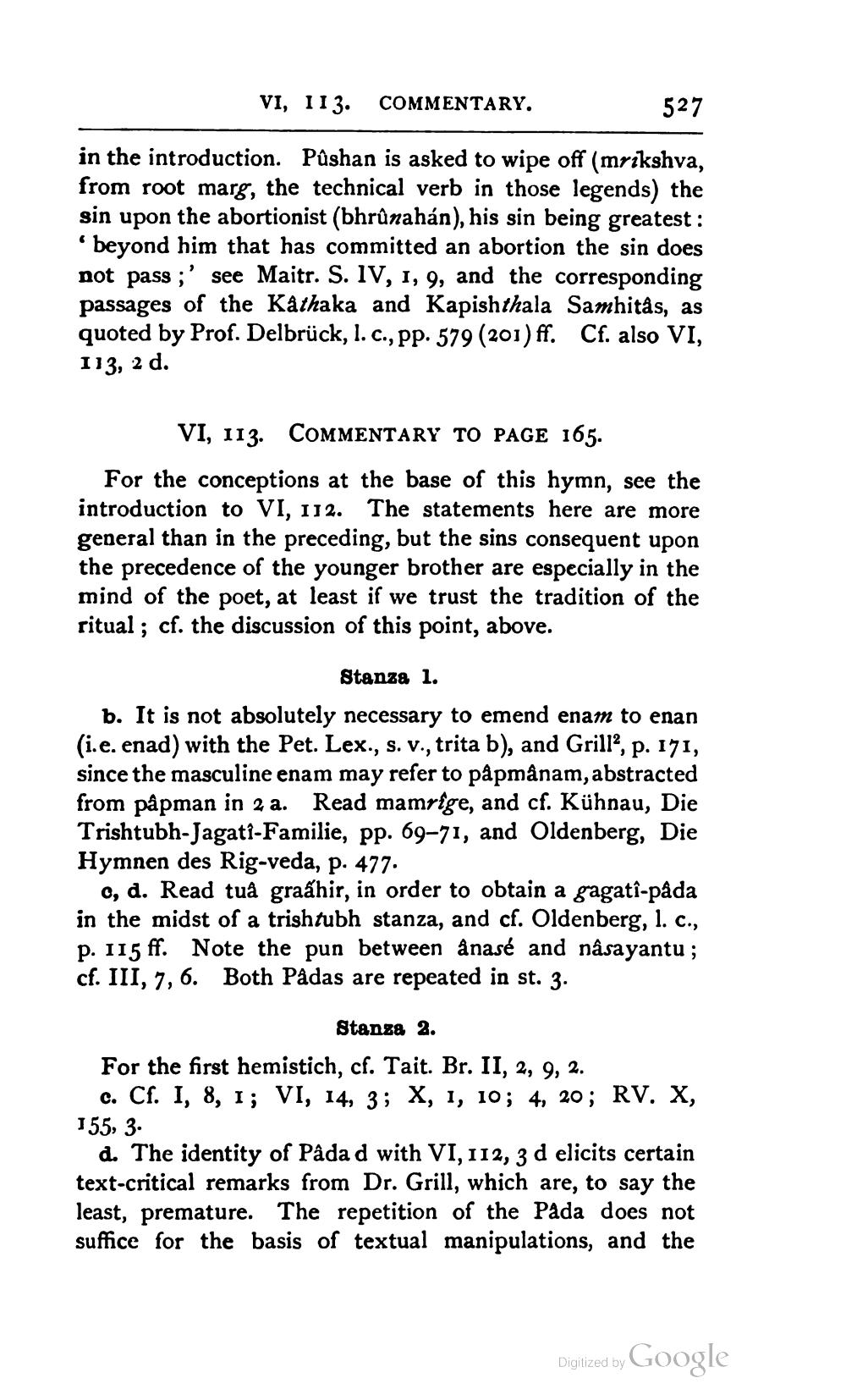________________
VI, 113. COMMENTARY.
527
in the introduction. Půshan is asked to wipe off (mrikshva, from root marg, the technical verb in those legends) the sin upon the abortionist (bhrûnahán), his sin being greatest: 'beyond him that has committed an abortion the sin does not pass ;' see Maitr. S. IV, 1, 9, and the corresponding passages of the Kathaka and Kapishthala Samhitas, as quoted by Prof. Delbrück, l. c., pp. 579 (201) ff. Cf. also VI, 113, 2 d.
VI, 113. COMMENTARY TO PAGE 165. For the conceptions at the base of this hymn, see the introduction to VI, 112. The statements here are more general than in the preceding, but the sins consequent upon the precedence of the younger brother are especially in the mind of the poet, at least if we trust the tradition of the ritual ; cf. the discussion of this point, above.
Stanza 1. b. It is not absolutely necessary to emend enam to enan (i.e. enad) with the Pet. Lex., s. v., trita b), and Grill, p. 171, since the masculine enam may refer to påpmânam, abstracted from påpman in 2 a. Read mamrige, and cf. Kühnau, Die Trishtubh-Jagati-Familie, pp. 69–71, and Oldenberg, Die Hymnen des Rig-veda, p. 477.
0, d. Read tua graấhir, in order to obtain a gagatî-pada in the midst of a trishtubh stanza, and cf. Oldenberg, 1. c., p. 115 ff. Note the pun between anasé and nâsayantu ; cf. III, 7, 6. Both Padas are repeated in st. 3.
Stanza 2. For the first hemistich, cf. Tait. Br. II, 2, 9, 2.
c. Cf. I, 8, 1; VI, 14, 3; X, 1, 10; 4, 20; RV. X, 155, 3.
d. The identity of Pâda d with VI, 112, 3 d elicits certain text-critical remarks from Dr. Grill, which are, to say the least, premature. The repetition of the Pada does not suffice for the basis of textual manipulations, and the
Digized by Google




